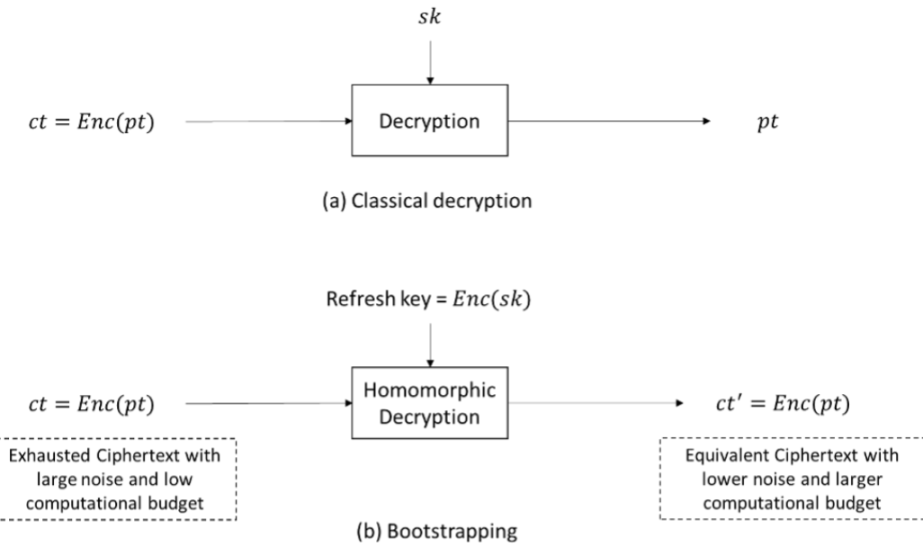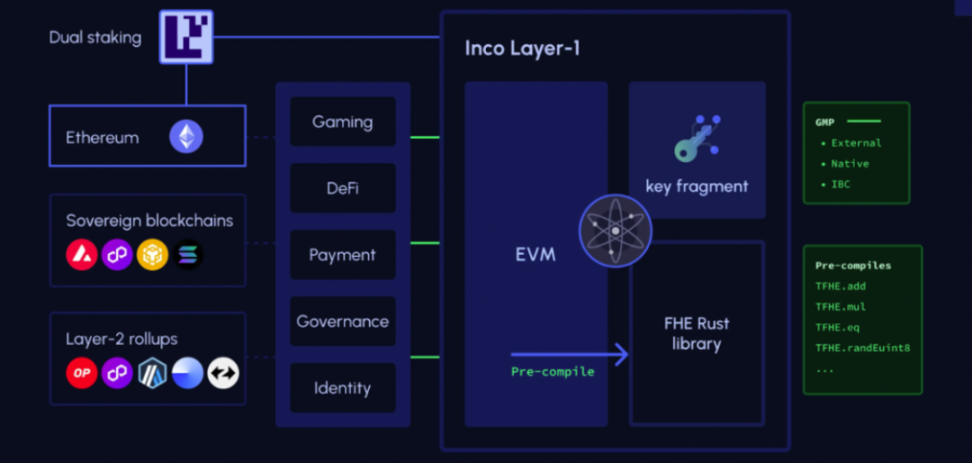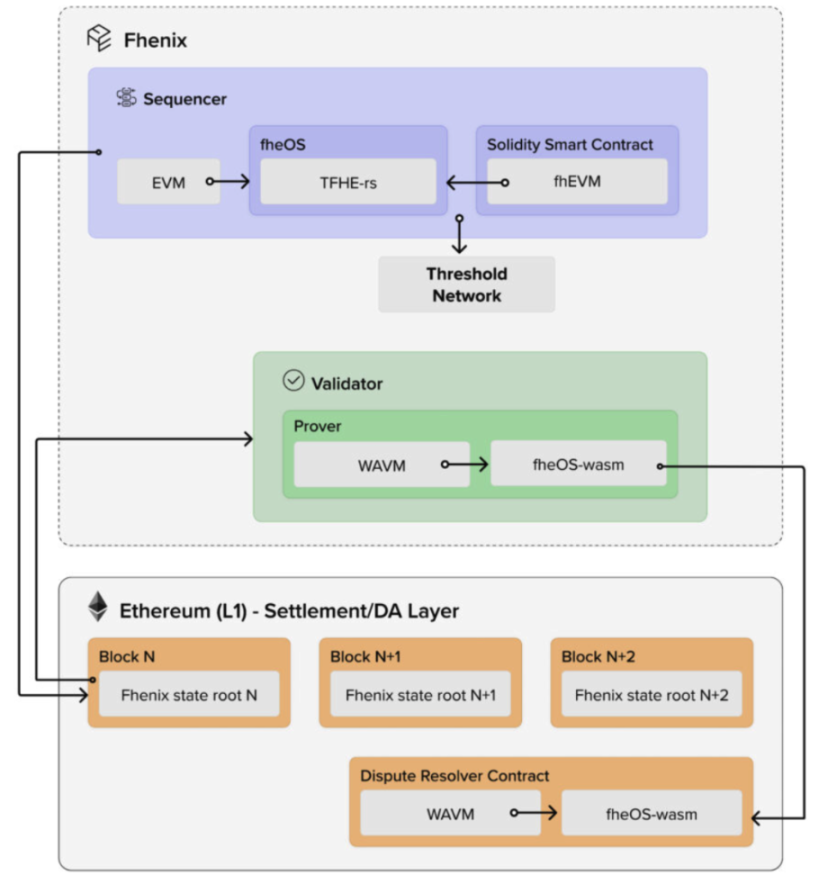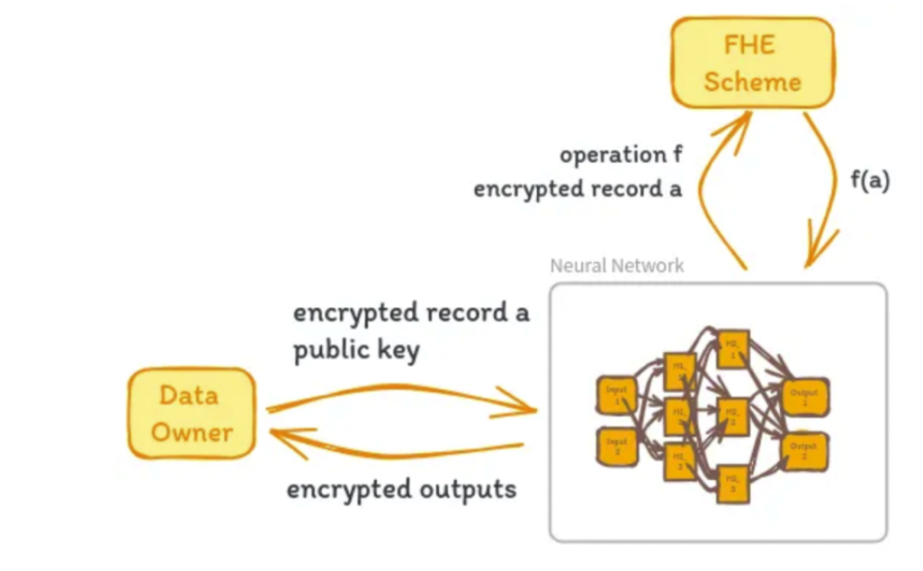IOSG Ventures: Mengapa FHE memiliki prospek aplikasi yang lebih baik di Web3?
Penulis asli: IOSG Ventures
Privasi merupakan hak fundamental bagi manusia dan organisasi. Bagi individu, privasi membantu orang mengekspresikan diri secara bebas tanpa harus mengungkapkan informasi yang tidak ingin mereka bagikan kepada pihak ketiga. Bagi sebagian besar organisasi saat ini, data dianggap sebagai komoditas utama, dan privasi data sangat penting untuk melindungi komoditas ini. Gerakan cypherpunk dan komoditisasi data telah mempercepat penelitian dan pengembangan primitif kriptografi.
Kriptografi merupakan bidang yang cukup luas, dan ketika kita melihat kriptografi dalam konteks komputasi, kita telah melihat banyak skema yang berbeda seperti zero-knowledge proof, homomorphic encryption, secret sharing, dll., yang terus ditingkatkan sejak awal kemunculannya pada tahun 1960-an. Skema-skema ini penting untuk membuka metode komputasi privat (data merupakan komoditas utama karena orang dapat menemukan wawasan darinya). Hingga hari ini, bidang komputasi privat telah membuat kemajuan signifikan dalam komputasi multipihak dan zero-knowledge proof, tetapi selalu ada masalah privasi dengan data input itu sendiri.
Jika komoditas yang paling penting adalah milik publik, sangat sulit bagi pemilik data mana pun untuk mengalihdayakan penghitungan data ini tanpa perjanjian hukum. Saat ini, semua orang bergantung pada standar kepatuhan untuk privasi data, seperti HIPAA untuk data kesehatan dan GDPR khususnya untuk privasi data di kawasan Eropa.
Dalam bidang blockchain, kami lebih percaya pada integritas teknologi daripada integritas regulator. Sebagai penganut prinsip tanpa izin dan memaksimalkan kepemilikan, jika kami percaya pada masa depan di mana pengguna memiliki data mereka sendiri, kami memerlukan metode tanpa kepercayaan untuk melakukan komputasi pada data tersebut. Konsep melakukan komputasi pada data terenkripsi sulit dipahami hingga karya Craig Gentry pada tahun 2009. Ini adalah pertama kalinya seseorang dapat melakukan komputasi (penjumlahan dan perkalian) pada ciphertext (yaitu, data terenkripsi).
1. Cara Kerja Enkripsi Homomorfik Penuh (FHE)
Jadi apa sebenarnya “matematika ajaib” yang memungkinkan komputer melakukan perhitungan tanpa memahami inputnya?
Enkripsi homomorfik penuh (FHE) adalah kelas skema kriptografi yang memungkinkan perhitungan dilakukan pada data terenkripsi (ciphertext) tanpa mendekripsi data, membuka berbagai kasus penggunaan untuk privasi dan perlindungan data.
Dalam proses FHE, saat data dienkripsi, data tambahan yang disebut noise ditambahkan ke data asli. Ini adalah proses enkripsi data.
Setiap kali Anda melakukan komputasi homomorfik (penjumlahan atau perkalian), noise tambahan akan ditambahkan. Jika komputasi terlalu rumit, menambahkan noise setiap kali pada akhirnya akan membuat dekripsi ciphertext menjadi sangat sulit (secara komputasi sangat berat). Proses ini lebih cocok untuk penjumlahan karena noise tumbuh secara linear, sedangkan untuk perkalian, noise tumbuh secara eksponensial. Oleh karena itu, jika ada perkalian polinomial yang kompleks, mendekripsi output akan menjadi sangat sulit.
Jika noise merupakan masalah utama dan pertumbuhannya membuat FHE sulit digunakan, maka hal tersebut harus dikendalikan. Hal ini memunculkan proses baru yang disebut Bootstrapping. Bootstrapping adalah proses mengenkripsi data terenkripsi dengan kunci baru dan mendekripsinya dalam bentuk enkripsi. Hal ini sangat penting karena secara signifikan mengurangi overhead komputasional serta overhead dekripsi dari output akhir. Sementara Bootstrapping mengurangi overhead dekripsi akhir, terdapat sejumlah besar overhead operasional dalam proses tersebut. Hal ini dapat memakan biaya mahal dan waktu.
Skema FHE utama saat ini meliputi: BFV, BGV, CKKS, FHEW, dan TFHE. Kecuali TFHE, singkatan skema-skema ini adalah nama-nama penulis makalahnya.
Anggaplah skema-skema ini sebagai bahasa-bahasa berbeda yang digunakan di negara yang sama, masing-masing dioptimalkan untuk sesuatu yang berbeda. Idealnya adalah memiliki negara yang bersatu di mana semua bahasa ini dapat dipahami oleh mesin yang sama. Banyak kelompok kerja FHE yang berupaya membuat skema-skema yang berbeda ini dapat disusun. Pustaka-pustaka seperti SEAL (menggabungkan skema BFV dan CKKS) dan HElib (BGV + perkiraan CKKS) membantu mengimplementasikan skema-skema FHE atau kombinasi skema-skema untuk berbagai perhitungan. Misalnya, pustaka Zamas Concrete adalah kompiler Rust untuk TFHE.
2. Perbandingan Skema FHE
Di bawah ini adalah perbandingan kinerja berbagai pustaka oleh Charles Guter, Dimitris Mouris, dan Nectarios George Tsousos dalam makalah mereka SoK: Wawasan Baru tentang Pustaka Enkripsi Homomorfik Penuh melalui Benchmark Terstandarisasi (2022).
Kasus Penggunaan Web3
Saat ini, saat kita menggunakan blockchain dan aplikasi, semua data bersifat publik dan dapat dilihat oleh semua orang. Ini bagus untuk sebagian besar kasus penggunaan, tetapi sepenuhnya membatasi banyak kasus penggunaan yang memerlukan privasi secara default atau kerahasiaan data (seperti model pembelajaran mesin, basis data medis, genomik, keuangan swasta, permainan yang tidak dicurangi, dll.). Blockchain atau mesin virtual yang didukung FHE pada dasarnya memungkinkan status seluruh rantai dienkripsi sejak awal, memastikan privasi, sekaligus memungkinkan komputasi sewenang-wenang dilakukan pada data terenkripsi. Semua data yang disimpan atau diproses pada jaringan blockchain yang didukung FHE pada dasarnya aman. Zama memiliki skema fhEVM yang memungkinkan komputasi EVM dilakukan dalam lingkungan yang sepenuhnya homomorfik. Ini memastikan privasi di tingkat eksekusi untuk setiap proyek L1/L2 yang dibangun menggunakan pustaka ini. Meskipun rantai privasi selalu menjadi teknologi yang keren, tingkat adopsi dan kinerja token belum meningkat secara signifikan.
Dalam hal pengalihdayaan komputasi tujuan umum, FHE sendiri tidak dimaksudkan untuk menggantikan ZK dan MPC. Keduanya dapat saling melengkapi untuk menciptakan raksasa komputasi privat tanpa kepercayaan. Misalnya, Sunscreen sedang membangun mesin privasi yang pada dasarnya memungkinkan aplikasi blockchain apa pun untuk mengalihdayakan komputasi ke lingkungan komputasi FHE mereka dan dapat memberikan umpan balik hasilnya. Komputasi yang dihasilkan dapat diverifikasi melalui pembuktian ZK. Octra melakukan hal serupa, tetapi menggunakan jenis skema kriptografi berbeda yang disebut hFHE.
Pembuktian ZK bagus dalam membuktikan sesuatu tanpa mengungkapkan data, tetapi pembuktian tersebut masih memiliki akses ke data tersebut pada suatu waktu. Pembuktian ZK tidak dapat digunakan untuk perhitungan pada data pribadi; pembuktian tersebut hanya dapat memverifikasi bahwa beberapa perhitungan telah dilakukan dengan benar.
MPC mendistribusikan komputasi data terenkripsi ke beberapa mesin, melakukan komputasi secara paralel, lalu menggabungkan hasil komputasi akhir. Selama mayoritas mesin yang melakukan komputasi jujur, data asli tidak dapat diambil, tetapi ini masih merupakan asumsi kepercayaan. Karena komunikasi konstan antara pihak-pihak yang diperlukan dalam MPC (data perlu terus-menerus dibagi, dihitung, dan dihubungkan kembali), menjadi sulit untuk diskalakan melalui perangkat keras.
Dalam FHE, semua komputasi dilakukan pada data terenkripsi tanpa mendekripsinya, dan ini dapat dilakukan pada satu server. Kinerja FHE dapat ditingkatkan dengan perangkat keras yang lebih baik, sumber daya komputasi yang lebih banyak, dan akselerasi perangkat keras.
Saat ini, kasus penggunaan terbaik untuk FHE di ruang blockchain lebih banyak tentang pengalihdayaan komputasi tujuan umum daripada membangun FHE L1/L2 bawaan. Berikut ini beberapa kasus penggunaan menarik yang dapat dibuka oleh FHE:
-
Generasi pertama (asli kripto): DID on-chain, kasino, taruhan, pemungutan suara, permainan, DeFi Pribadi, token pribadi, dark pool, 2FA, pencadangan, kata sandi.
-
Generasi kedua (modular): “Chainlink untuk privasi”, komputasi pribadi yang dialihdayakan, enkripsi ujung ke ujung antara blockchain dan kontrak, ketersediaan data terenkripsi, penyimpanan data aman yang dapat diverifikasi.
-
Generasi ketiga (tingkat perusahaan): aplikasi konsumen yang kompleks, LLM terenkripsi dan terdesentralisasi, kecerdasan buatan, perangkat yang dapat dikenakan, komunikasi, militer, medis, solusi pembayaran yang menjaga privasi, pembayaran P2P Pribadi.
Proyek industri terkini berdasarkan FHE
Pengembangan enkripsi homomorfik penuh (FHE) telah menginspirasi beberapa proyek blockchain inovatif yang memanfaatkan teknologi ini untuk meningkatkan privasi dan keamanan data. Bagian ini membahas detail teknis dan pendekatan unik dari proyek-proyek terkenal seperti Inco, Fhenix, dan Zama.
Inco
Inco memelopori integrasi FHE dengan blockchain, menciptakan platform yang membuat komputasi data aman dan privat. Inco menggunakan kriptografi berbasis kisi untuk mengimplementasikan skema FHE-nya, memastikan bahwa operasi pada ciphertext (data terenkripsi) dapat dilakukan tanpa mengungkap plaintext yang mendasarinya. Platform ini mendukung kontrak pintar yang menjaga privasi, yang memungkinkan data terenkripsi diproses langsung pada blockchain.
-
FHE Berbasis Kisi: Inco menggunakan kriptografi berbasis kisi untuk implementasi FHE-nya, yang dikenal karena sifat keamanan pasca-kuantumnya, yang memastikan ketahanan terhadap kemungkinan serangan kuantum di masa mendatang.
-
Kontrak pintar yang menjaga privasi: Kontrak pintar Inco dapat menjalankan fungsi arbitrer pada masukan terenkripsi, memastikan bahwa baik kontrak maupun node yang menjalankan kontrak tidak dapat mengakses data teks biasa.
-
Manajemen Kebisingan dan Bootstrapping: Untuk menangani masalah pertumbuhan kebisingan selama operasi homomorfik, Inco menerapkan teknik Bootstrapping yang efisien untuk menyegarkan ciphertext dan mempertahankan dekripsi saat melakukan perhitungan yang kompleks.
Feniks
Fhenix berfokus pada penyediaan infrastruktur yang kuat untuk aplikasi yang menjaga privasi, menggunakan FHE untuk menyediakan solusi enkripsi menyeluruh guna melindungi data pengguna. Platform Fhenix dirancang untuk mendukung berbagai aplikasi mulai dari pengiriman pesan yang aman hingga transaksi keuangan pribadi, memastikan privasi data selama semua proses komputasi.
-
Enkripsi menyeluruh: Fhenix memastikan bahwa data tetap terenkripsi dari titik masuk hingga pemrosesan dan penyimpanan. Hal ini dicapai dengan menggabungkan FHE dan teknologi komputasi multipihak yang aman (SMPC).
-
Manajemen Kunci yang Efisien: Fhenix mengintegrasikan sistem manajemen kunci yang canggih untuk memfasilitasi distribusi dan rotasi kunci yang aman, yang merupakan kunci untuk menjaga keamanan jangka panjang di lingkungan FHE.
-
Skalabilitas: Platform ini menggunakan operasi homomorfik yang dioptimalkan dan pemrosesan paralel untuk menangani komputasi skala besar secara efisien, mengatasi salah satu tantangan utama FHE.
-
Koprosesor: Fhenix juga memelopori pengembangan koprosesor khusus yang dirancang untuk mempercepat komputasi FHE. Koprosesor ini secara khusus dirancang untuk menangani operasi matematika intensif yang diperlukan untuk FHE, sehingga secara signifikan meningkatkan kinerja dan skalabilitas aplikasi yang menjaga privasi.
Zama
Zama adalah pemimpin dalam bidang FHE, paling dikenal karena skema fhEVM-nya, yang memungkinkan komputasi Ethereum EVM dilakukan dalam lingkungan yang sepenuhnya homomorfik, memastikan privasi pada tingkat eksekusi untuk setiap proyek L1/L2 yang dibangun menggunakan pustaka tersebut.
-
Solusi fhEVM: Solusi fhEVM Zamas mengintegrasikan FHE dengan Ethereum Virtual Machine untuk memungkinkan eksekusi kontrak pintar terenkripsi. Hal ini memungkinkan transaksi dan komputasi rahasia dalam ekosistem Ethereum.
-
Pustaka Concrete: Pustaka Concrete Zamas adalah kompiler Rust untuk TFHE (salah satu varian FHE). Pustaka ini menyediakan implementasi skema enkripsi homomorfik berkinerja tinggi, yang membuat komputasi kriptografi lebih efisien.
-
Interoperabilitas: Zama berkomitmen untuk menciptakan solusi yang bekerja secara lancar dengan infrastruktur blockchain yang ada. Ini termasuk mendukung berbagai macam primitif dan protokol kriptografi, memastikan kompatibilitas yang luas dan kemudahan integrasi.
3. Peran penting FHE dalam Infrastruktur dan Aplikasi Kripto dan AI
Saat ini, persimpangan antara kriptografi dan AI sedang berlangsung pesat. Tanpa membahas lebih jauh tentang persimpangan ini, perlu dicatat bahwa inovasi dalam model dan kumpulan data baru akan didorong oleh kolaborasi sumber terbuka di antara banyak pihak. Di luar komputasi, yang terpenting adalah data, dan data ini merupakan bagian terpenting dari jalur kolaborasi ini. Aplikasi dan model AI pada akhirnya hanya berguna jika data yang digunakan untuk melatihnya, baik itu model dasar, model yang disempurnakan, atau agen cerdas AI. Menjaga data ini tetap aman dan pribadi membuka ruang desain yang besar untuk kolaborasi sumber terbuka sekaligus memungkinkan pemilik data untuk terus mendapatkan keuntungan dari model pelatihan atau aplikasi akhir. Jika data ini bersifat publik, akan sulit untuk dimonetisasi (karena siapa pun dapat mengakses kumpulan data yang berharga), sehingga data ini kemungkinan besar akan dilindungi dengan ketat.
Dalam konteks ini, FHE dapat memainkan peran kunci. Idealnya, FHE dapat melatih model tanpa mengungkap kumpulan data yang mendasarinya, yang dapat membuka peluang monetisasi kumpulan data dan sangat mendukung kolaborasi sumber terbuka di antara pemilik kumpulan data.
Sumber: Bagel Network
Bagaimana FHE Meningkatkan Pembelajaran Mesin Pelestari Privasi (PPML)
-
Privasi Data: Dengan menggunakan FHE, data sensitif seperti catatan medis, informasi keuangan, atau pengenal pribadi dapat dienkripsi sebelum dimasukkan ke dalam model ML. Hal ini memastikan bahwa data tetap rahasia bahkan jika lingkungan komputasi terganggu.
-
Pelatihan model yang aman: Pelatihan model ML biasanya memerlukan data dalam jumlah besar. Dengan menggunakan FHE, data ini dapat dienkripsi, sehingga model dapat dilatih tanpa mengungkap data asli, yang sangat penting bagi industri yang menangani informasi yang sangat sensitif dan tunduk pada peraturan privasi data yang ketat.
-
Inferensi Rahasia: Selain untuk pelatihan, FHE juga dapat digunakan untuk inferensi terenkripsi. Ini berarti bahwa setelah model dilatih, prediksi dapat dibuat pada input terenkripsi, yang memastikan bahwa data pengguna tetap bersifat pribadi selama proses inferensi.
-
Bidang aplikasi FHE PPML:
-
Perawatan kesehatan: Melatih model ML dengan cara menjaga privasi dapat menghasilkan perawatan yang lebih personal dan efektif tanpa mengungkap informasi pasien yang sensitif.
-
Keuangan: Lembaga keuangan dapat menggunakan FHE untuk menganalisis data transaksi terenkripsi untuk deteksi penipuan dan penilaian risiko sambil menjaga privasi pelanggan.
-
IoT dan perangkat pintar: Perangkat dapat mengumpulkan dan memproses data dalam bentuk terenkripsi, memastikan bahwa informasi sensitif seperti data lokasi atau pola penggunaan tetap rahasia.
Masalah dengan FHE:
Seperti yang disebutkan sebelumnya, tidak ada kesatuan antara skema FHE. Skema tidak dapat disusun, dan sering kali skema FHE yang berbeda perlu digabungkan untuk berbagai jenis komputasi. Proses bereksperimen dengan skema yang berbeda untuk komputasi yang sama juga cukup merepotkan. Kerangka kerja CHIMERA yang sedang dikembangkan memungkinkan peralihan antara berbagai skema FHE seperti TFHE, BFV, dan HEAAN, tetapi saat ini masih jauh dari dapat digunakan. Hal ini menyebabkan masalah berikutnya, yaitu kurangnya tolok ukur. Tolok ukur sangat penting bagi pengembang untuk mengadopsi teknologi ini. Ini akan membantu menghemat waktu banyak pengembang. Mengingat overhead komputasi (enkripsi, dekripsi, bootstrapping, pembuatan kunci, dll.), banyak perangkat keras serbaguna yang ada tidak terlalu cocok. Beberapa bentuk akselerasi perangkat keras diperlukan, atau chip tertentu (FPGA dan/atau ASIC) mungkin perlu dibuat untuk mencapai aplikasi FHE yang lebih umum. Masalah mode ini dapat dibandingkan dengan industri ZK (zero-knowledge). Selama sekelompok matematikawan, ilmuwan terapan, dan insinyur cerdas berminat pada bidang ini, kami akan tetap optimis pada kedua bidang tersebut: FHE untuk privasi dan ZK untuk verifikasi.
4. Seperti apa masa depan yang didorong oleh FHE?
Apakah akan ada satu solusi FHE yang dapat mengatasi semuanya? Diskusi ini masih berlangsung di industri. Meskipun idealnya adalah memiliki solusi terpadu, beragam kebutuhan aplikasi yang berbeda mungkin selalu memerlukan solusi khusus yang dioptimalkan untuk tugas-tugas tertentu. Apakah interoperabilitas antar solusi merupakan solusi terbaik? Interoperabilitas mungkin memang merupakan pendekatan praktis, yang memungkinkan fleksibilitas untuk menangani beragam kebutuhan komputasi sekaligus memanfaatkan kekuatan berbagai solusi.
Kapan FHE akan tersedia? Ketersediaan terkait erat dengan kemajuan dalam mengurangi beban komputasi, meningkatkan standar pembandingan, dan mengembangkan perangkat keras khusus. Seiring kemajuan yang dicapai di area ini, FHE akan menjadi lebih mudah diakses dan praktis.
Singkatnya, FHE menyediakan alat yang ampuh untuk perlindungan privasi data dan komputasi yang aman. Meskipun masih ada tantangan dalam interoperabilitas, overhead komputasi, dan dukungan perangkat keras, potensi FHE dalam blockchain, pembelajaran mesin yang menjaga privasi, dan aplikasi Web3 yang lebih luas tidak dapat diabaikan. Dengan pengembangan dan inovasi teknologi yang berkelanjutan, FHE diharapkan dapat memainkan peran penting dalam masa depan perlindungan privasi dan komputasi yang aman.
Artikel ini bersumber dari internet: IOSG Ventures: Mengapa FHE memiliki prospek aplikasi yang lebih baik di Web3?
Terkait: Shibarium Menyelesaikan Hard Fork, Menjanjikan Transaksi yang Sangat Cepat: Dampak Harga
Secara Singkat Shibarium menyelesaikan hard fork, menjanjikan transaksi cepat. Pembaruan ini bertujuan untuk jaringan Shibarium yang terjangkau dan mudah diakses. SHIB mungkin mengalami lonjakan harga jika menembus di atas $0.00002349. Shibarium, jaringan lapis-2 dari ekosistem Shiba Inu (SHIB), berhasil menyelesaikan hard fork yang signifikan pada tanggal 2 Mei. Pembaruan ini menjanjikan untuk memberikan transaksi yang sangat cepat dan biaya gas yang lebih dapat diprediksi, meningkatkan interaksi pengguna dengan jaringan. Apakah Shiba Inu Siap untuk Melaju Setelah Hard Fork Shibarium? Jaringan Shibarium mengumumkan di X (sebelumnya Twitter) bahwa mereka telah menyelesaikan hard fork pada ketinggian blok 4.504.576. Hard fork dalam teknologi blockchain memerlukan peningkatan besar yang mengakibatkan pemisahan jaringan menjadi dua rantai. Diperkenalkan pada tanggal 24 April, proses ini memperkenalkan perubahan mendasar yang tidak kompatibel dengan perangkat lunak sebelumnya…












